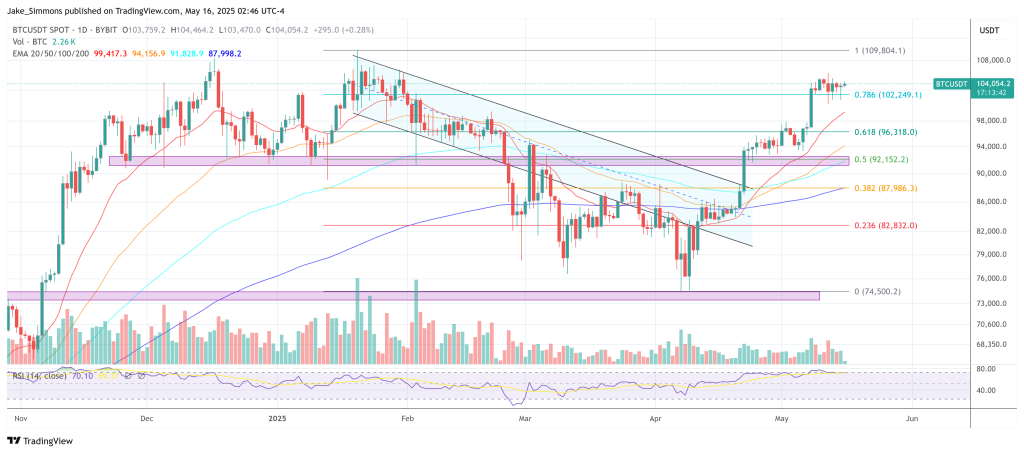Galaxy CEO Novogratz Predicts Bitcoin’s Next Leg Up: $130K In Sight
Mike Novogratz—Wall Street’s favorite crypto cowboy—just doubled down on his Bitcoin bull case. The Galaxy Digital CEO sees BTC primed for a violent breakout toward $130,000, citing institutional demand and macroeconomic tailwinds.
Why now? The halving dust has settled, ETFs are hoarding supply, and the Fed’s rate-cut theater has traders itching for risk. ’This isn’t 2021 retail FOMO,’ Novogratz insists. ’It’s real money chasing scarcity.’
Cue the eye-rolls from gold bugs and central bankers. But with BlackRock’s ETF sucking up 10,000 BTC monthly and hedge funds quietly accumulating, the ’digital gold’ narrative looks less like hype and more like inevitability. Just don’t tell the SEC.
The Key For A New Bitcoin All-Time High
That regained momentum, Novogratz contends, has already neutralised the post-tariff risk-off that rattled global assets. Gold “roofed” while bitcoin “sold off,” yet the cryptocurrency’s rebound has outpaced every major risk proxy. ETF demand underscores the shift: “Net cumulative flows are at all-time highs,” noted Galaxy trader Bimnet Abbi in the same episode, adding that retail and corporate treasuries continue to absorb supply. MicroStrategy’s at-the-market issuance has been “buying at a record pace,” and fresh entrants—including the “SoftBank-Tether version of MicroStrategy,” a newly announced “David Bailey version,” and an expanding Japanese version Metaplanet—are repeating that playbook.
Novogratz sees these structural bids compressing the window between resistance and fresh price discovery. “It feels right now like if we take out $107,000, we’re going to be $120,000 – $130,000,” he predicted. The level he emphasised—$107,000—marks both the post-ETF closing high and the neckline of March’s corrective range; a decisive breach would, in his framing, unleash a self-reinforcing scramble for exposure among under-positioned institutions.
Macro inputs appear to support that thesis. Equities “have rallied almost 25% from the lows,” Abbi observed, while retail investors who “bought the dip … are now sitting in a TON of profits.” Against that backdrop, Bitcoin’s correlation to traditional risk has remained elastic, at times trading “like gold” when monetary hedges caught a bid, and at times outperforming high-beta equities during growth rotations. For Novogratz, that chameleon-like behaviour is evidence that Bitcoin is maturing into “a macro asset that is going to be on every desk of every macro trader”—a role that, in his view, will eventually see its market capitalisation surpass gold’s.
Even so, he acknowledged the feedback loop that can magnify volatility. Short-term froth—“real sellers … that bought at forty decided they wanted to sell at a hundred,” he said—dragged the asset down to $74,000 after January’s euphoric peak, and further tariff-driven shocks could repeat the pattern. Yet the supply-absorption dynamic, buttressed by ETF creations and corporate treasuries, has thus far shortened each corrective phase, allowing spot prices to stabilise in six-figure territory within six weeks of the March trough.
The technical and structural narratives therefore converge, Novogratz argues, at the $107,000 pivot. Should that barrier yield, he expects a swift repricing into the $120,000 to $130,000 range—an advance of roughly 20% that WOULD reset the discussion around how quickly Bitcoin can challenge its inflation-adjusted gold equivalent. Until then, the market waits on a single catalytic print; as the Galaxy CEO put it, “as soon as we get a little bit of mojo … you’re going to be asking, ‘how did that happen?’”
At press time, BTC traded at $104,054.


